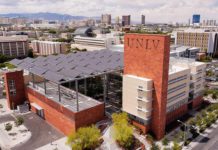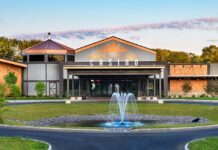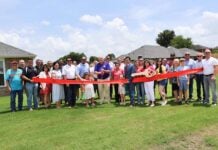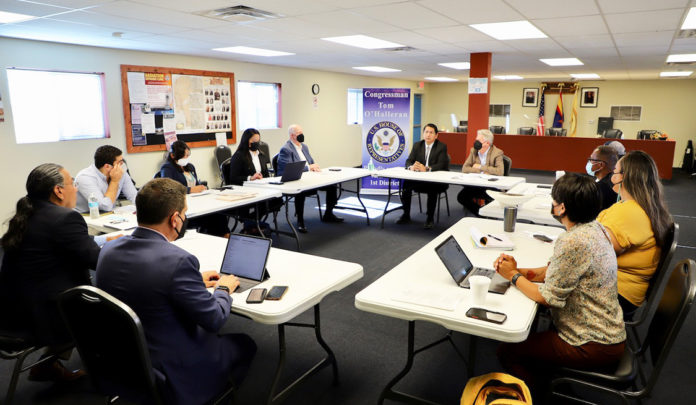CAMERON, AZ – Navajo Nation President Jonathan Nez, Council Delegate Thomas Walker, Jr., and Cameron Chapter officials welcomed U.S. House Committee on Energy and Commerce Chairman Frank Pallone, Jr. (D-NJ) and Arizona Congressman Tom O’Halleran (D-AZ) to Cameron, AZ, to visit one of hundreds of abandoned uranium mine sites on the Navajo Nation. The community of Cameron is located 48 miles north of Flagstaff, AZ, in the western portion of the Navajo Nation.
President Nez was also joined by Navajo Nation EPA Executive Director Valinda Shirley and Navajo Nation Washington Office Executive Director Lashawna Tso. Cameron Chapter President Charlie Smith, Jr., Vice President Candis Yazzie, and Legislative District Assistant Alicia Chee were also part of the discussion that focused on the federal EPA’s obligations to clean up more than 500 abandoned uranium mines across the Navajo Nation.
“Progress is being made in the clean-up efforts and with the establishment of the first cancer treatment center on the Navajo Nation in recent years, but more needs to happen to fully fund the cleanup of the remaining 305 uranium mine sites and to provide more support for health care services,” said President Nez. “We have so many Navajo people who are challenged with health issues directly caused by uranium mining activities conducted by the federal government. We appreciate Congressman O’Halleran for his continued support and for bringing Chairman Pallone to the Navajo Nation to speak with the people on the ground who deal with these issues on a daily basis.”
Approximately 30 million tons of uranium ore were extracted from Navajo lands during mining operations from 1944 to 1986 to support America’s nuclear activities such as the U.S. Military’s Manhattan Project, World War II, and the Cold War.
There are approximately 524 abandoned uranium mine sites on the Navajo Nation with 111 of them in the western region alone. The Navajo Nation EPA estimates that there could be far more. Unfortunately, only 219 of these sites have available funds for clean-up and remediation efforts, leaving a total of 305 unaddressed sites that pose severe environmental and health hazards to surrounding areas and people.
During the visit, the Navajo Nation EPA also led a site visit to two abandoned mines near the Cameron Chapter House, where generations of Navajo families continue to reside in nearby homes. Navajo Nation EPA Executive Director Valinda Shirley recommended that a comprehensive health study should be completed to show how extensive the health impacts are, to address regulatory reforms, and commit more funding for clean-ups.
Last September, President Nez and Congressman O’Halleran also welcomed U.S. Environmental Protection Agency Administrator Michael S. Regan to Cameron to visit uranium sites and to hear from local leaders and residents.
“I was glad to bring Chairman Pallone with me to sit down with President Nez, Navajo EPA officials, and Cameron leadership to discuss abandoned uranium mines and what the federal government must do,” said O’Halleran. “These mines directly affect the health and safety of Navajo families and they are the federal government’s responsibility to clean up. As the Chairman of the House Energy and Commerce Committee, Chairman Pallone’s firsthand experience on this will be hugely effective in elevating this issue in Washington. I look forward to continued work with President Nez and Navajo leadership on this issue; we need to get this done.”
President Nez also worked with congressional members and the White House to extend the Radiation Exposure Compensation Act for an additional two years, which also provides more time to work on a long-term solution that would extend the Act until 2040, expand downwinder eligibility based on geographic residency and expand the range of years that can be used for calculating exposure for certain individuals working in uranium mines, mills, or transporting uranium ore.

















































